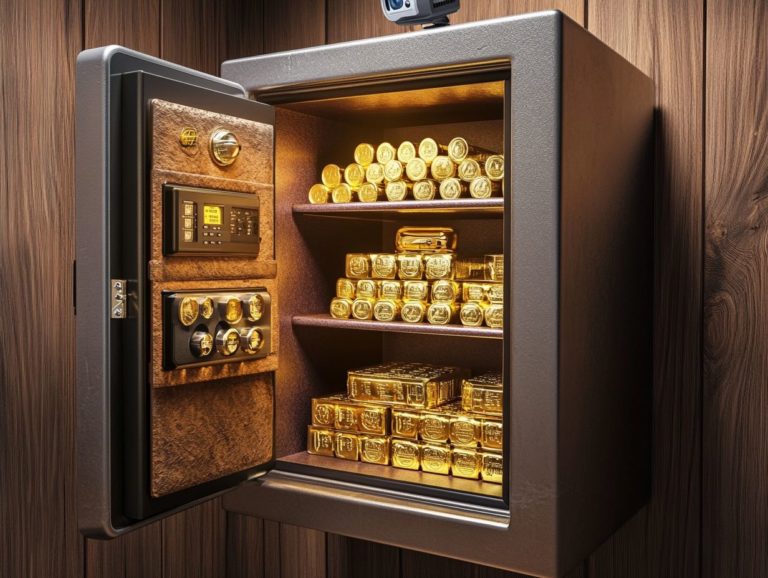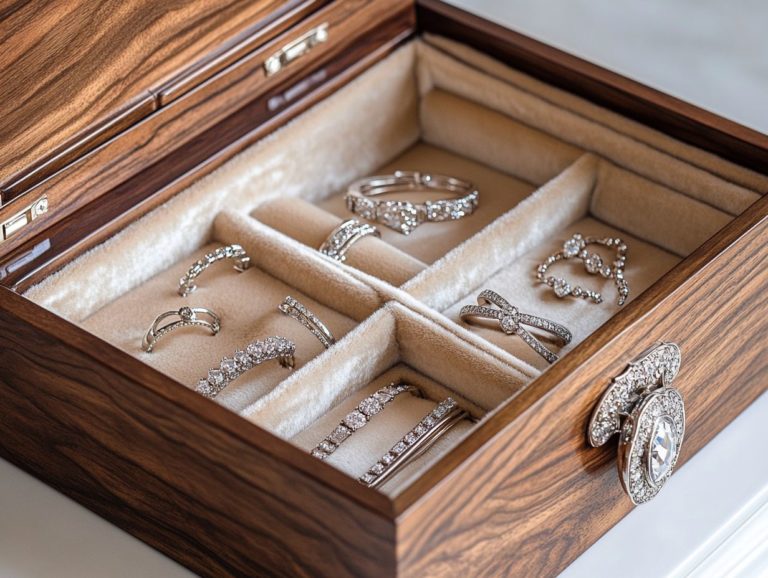How to Maintain Metal Condition During Storage
Proper storage is crucial for the longevity of your metal items, including tools, machinery, or artistic pieces. Neglecting storage can lead to rust and corrosion, which can be costly to repair.
This guide highlights effective storage practices. You’ll learn how to prepare your metal, the best practices to implement, and the routine maintenance necessary to keep them in top shape.
From controlling temperature and humidity to regular inspections, this guide offers everything you need to keep your metal looking pristine for years.
Contents
- Key Takeaways:
- The Importance of Proper Storage for Metal
- Preparing Metal for Storage
- Best Practices for Storing Metal
- Common Mistakes to Avoid
- Regular Maintenance for Stored Metal
- Long-Term Storage Considerations
- Frequently Asked Questions
- What are the best practices for maintaining metal condition during storage?
- Why is it important to maintain metal condition during storage?
- How often should metal be inspected during storage?
- What are some common causes of metal corrosion during storage?
- What steps should be taken to prevent metal corrosion during storage?
- Can metal condition be restored after storage damage?
Key Takeaways:
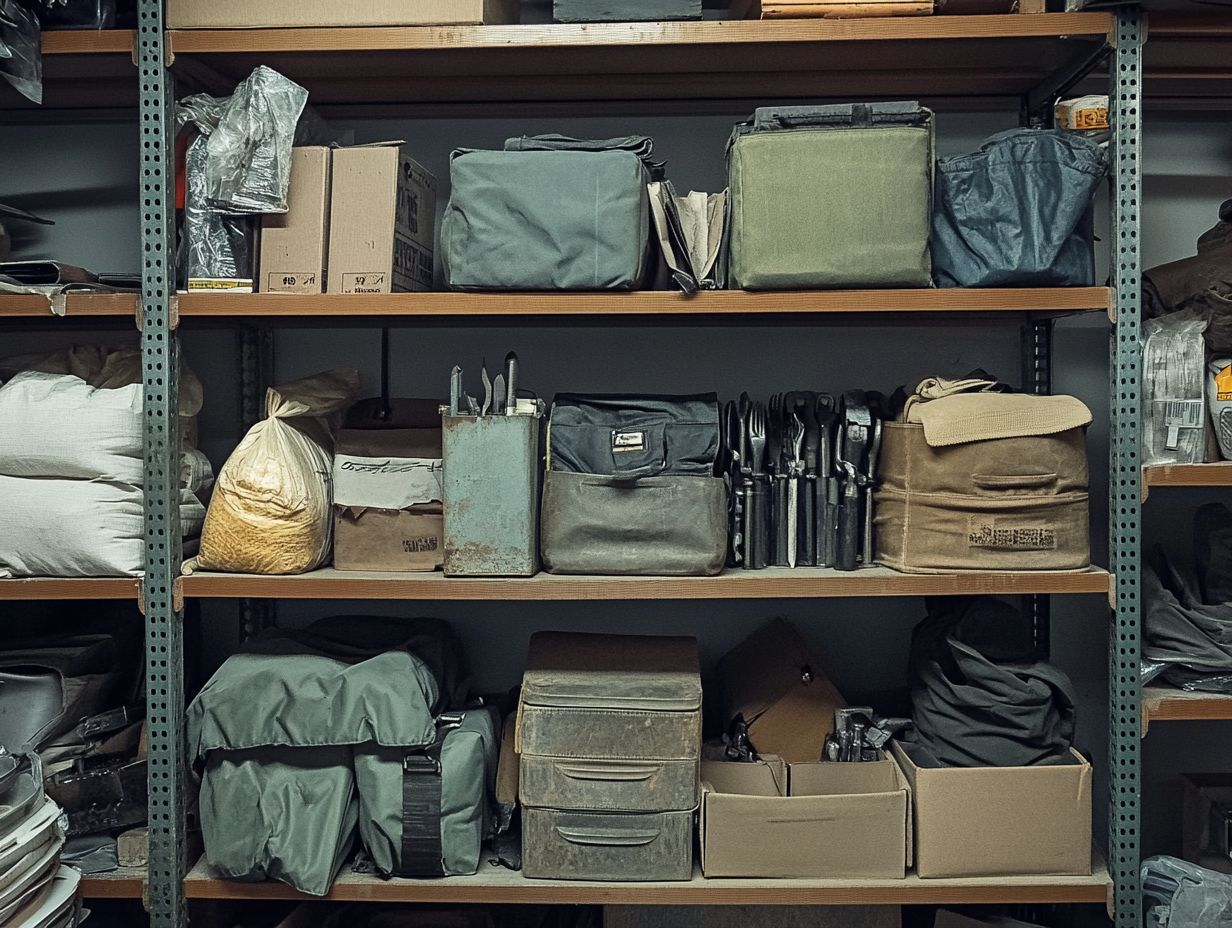
- Proper storage is key to maintaining metal condition and preventing damage.
- Clean and protect metal surfaces before storage.
- Control temperature and humidity to preserve metal effectively.
The Importance of Proper Storage for Metal
Proper storage of metal especially iron, steel, and various alloys is essential for preserving their integrity and longevity. Environmental factors like humidity and temperature can significantly contribute to corrosion and rust.
In high humidity conditions, moisture can accumulate and increase the risk of deterioration. Adopting effective storage solutions that emphasize protective coatings and environmental control ensures the safety of the metals and their value retention over time.
Effects of Improper Storage on Metal Condition
Improper storage leads to serious issues like rust and corrosion, especially in humid environments. For instance, moisture causes iron to oxidize, creating rust that weakens the metal.
Steel can face galvanic corrosion when stored with different metals. Rapid temperature changes can cause condensation, which also promotes rust.
To safeguard against these risks, keep metals in climate-controlled environments with adequate ventilation. This approach helps preserve their longevity and ensures optimal performance.
Preparing Metal for Storage
Preparing metal for storage requires careful attention. Start by cleaning surfaces thoroughly and applying protective coatings.
Moisture can cause corrosion, risking your metal’s integrity. Taking these steps keeps your metal in great condition for future use.
Cleaning and Protecting Metal Surfaces
Clean and protect metal surfaces to prevent rust and corrosion. For effective cleaning, consider methods like scrubbing or using specialized cleaners.
After cleaning, apply protective coatings like paint or oil. These create a barrier against moisture and enhance the metal’s appearance.
By committing to a thorough cleaning before application, you ll secure the integrity and longevity of your metal surfaces for years to come.
Best Practices for Storing Metal
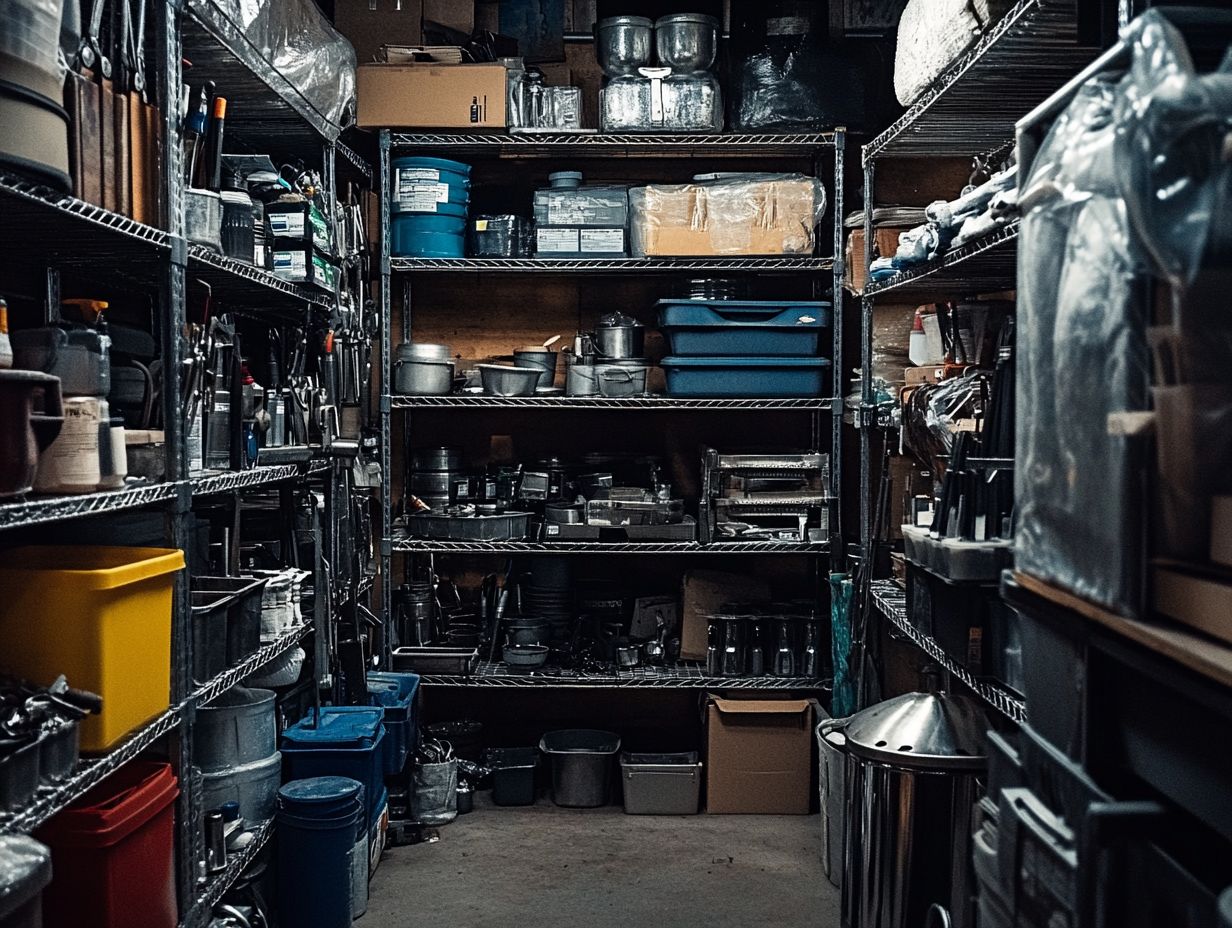
When storing metal, prioritize best practices that ensure its longevity. Maintain optimal temperature and humidity control to significantly reduce the risk of rusting.
Consider using dehumidifiers to effectively manage humidity levels. Be diligent in selecting the most suitable storage conditions. These steps will help safeguard your metal assets for years to come.
Temperature and Humidity Control
Effective temperature and humidity control is crucial to preventing corrosion in metals. Fluctuations can increase humidity, heightening the risk of rust formation.
For metals like steel, keep a consistent temperature between 60 F and 80 F and humidity levels around 30% to 50%. Brass can tolerate a wider range, but it’s still essential to monitor humidity to avoid tarnishing.
To create ideal storage conditions, use dehumidifiers in damp areas along with airtight containers or climate-controlled spaces. Regularly check hygrometers and thermometers to identify and address any environmental changes that may jeopardize metal integrity.
Storage Containers and Materials
Selecting the right storage containers and materials is essential for protecting metals from environmental factors that can lead to degradation.
Different storage options provide varying levels of protection against moisture, rusting, and physical deterioration. For instance, plastic containers are lightweight and rust-resistant, making them ideal for delicate metals. Heavier-duty steel bins offer robust durability for industrial-grade materials.
Applying protective coatings, such as galvanized finishes or powder coatings, enhances a container’s ability to fend off corrosive elements. Familiarizing yourself with the characteristics of each storage solution allows you to make informed choices that extend the lifespan of your valuable metal resources.
Common Mistakes to Avoid
Avoiding common mistakes in metal storage is essential for protecting your assets. Oversights in humidity control and insufficient protective measures can lead to significant rusting, compromising the integrity of your materials.
Focusing on these details ensures your investments remain in optimal condition!
How to Prevent Damage During Storage
Implement effective strategies to prevent damage during storage. Prioritize humidity control and apply suitable protective coatings on metals.
- Use silica gel packets or dehumidifiers to significantly reduce moisture levels.
- Apply protective coatings, such as anti-corrosive sprays or waxes, to create a barrier against contaminants.
- Conduct regular inspections to identify early signs of degradation.
- Wrap metals in breathable materials instead of plastic to allow proper air circulation and prevent moisture buildup.
By following these steps, your valuable items can remain in peak condition! Make sure to check your metals regularly to keep them in excellent shape!
Regular Maintenance for Stored Metal
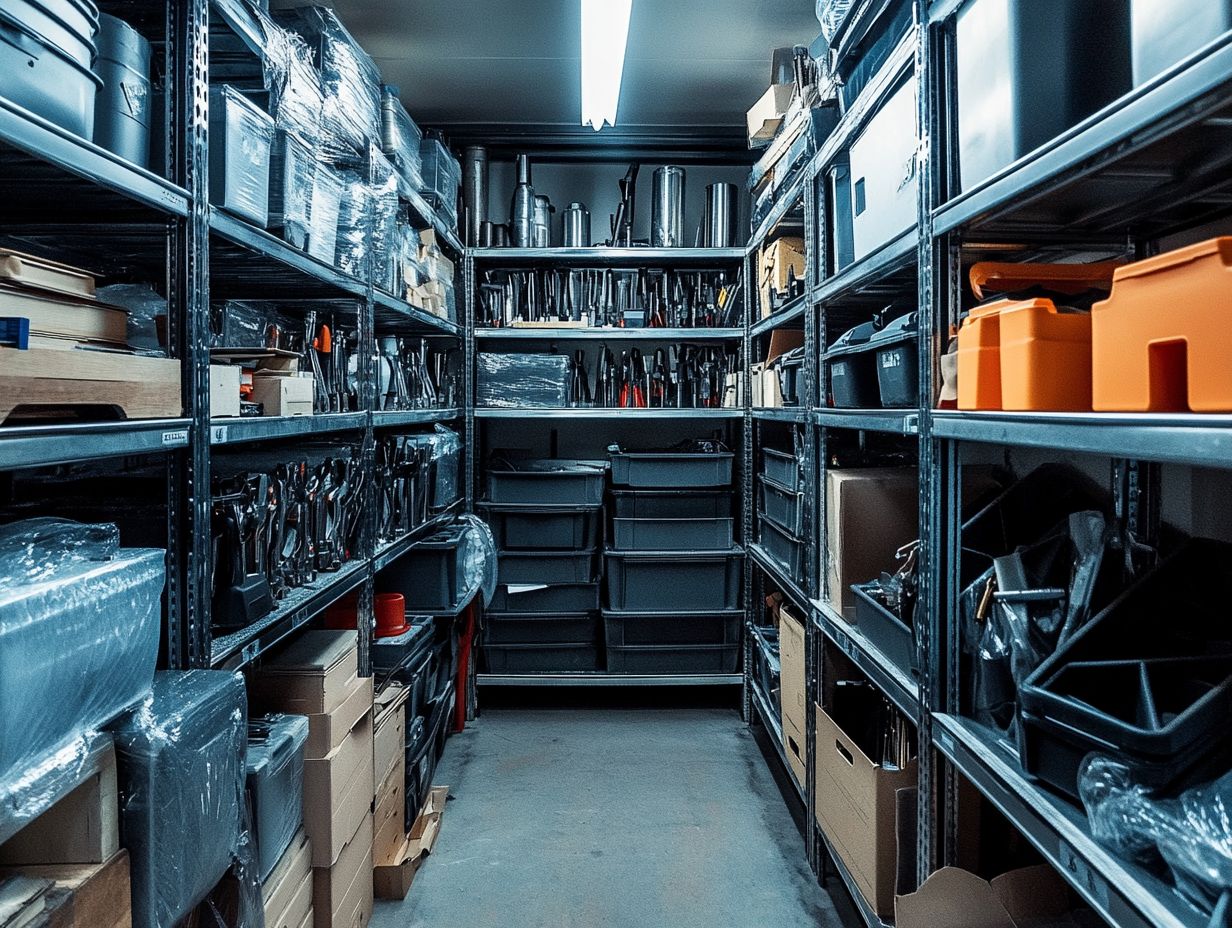
Regular maintenance for your stored metal is essential. This includes routine inspections and cleaning procedures to detect any signs of corrosion or rust early on. Addressing these issues promptly can prevent significant complications.
Inspection and Cleaning Procedures
Inspection and cleaning procedures are essential for preserving the quality of your stored metals. They enable you to detect rust and corrosion before these issues become serious.
When conducting inspections, focus on spotting visible signs of moisture. Moisture can accelerate deterioration. Pay particular attention to joints and seams, which are often overlooked yet vulnerable.
For cleaning, consider using a gentle mixture of mild detergent and water to remove surface grime without risking damage to the metal. Use soft-bristled brushes to ensure a thorough clean while keeping the surface scratch-free.
Incorporating regular inspections into your maintenance routine and addressing any damage immediately can significantly extend the lifespan and integrity of the metals in storage.
Long-Term Storage Considerations
When considering long-term storage, take specific precautions to mitigate moisture exposure. This ensures the preservation of metals like iron and steel. Focus on environmental conditions to protect your valuable materials and significantly extend their lifespan.
Moisture Control
Special precautions for extended storage are vital, particularly regarding moisture control and applying protective coatings to prevent rust and corrosion.
To maintain the integrity of your metals over long periods, consider using drying agents to absorb humidity in your storage environment. Creating a climate-controlled area can enhance these efforts, ensuring that temperature fluctuations are minimized.
Protective Coatings
Choosing the right protective coatings like oil-based or wax-based formulas establishes a robust barrier against moisture. If you’re looking for a more permanent solution, applying a rust-inhibitive primer before storage is wise.
Regular inspections and gentle cleaning methods, such as using soft brushes, will help keep your metals in pristine condition, ensuring they remain untouched by damage over time.
Summary of Key Points
Key points about metal storage emphasize the critical need for proper humidity and temperature control, alongside regular maintenance to ward off corrosion and rust.
These elements are vital for ensuring metals retain their structural integrity and aesthetic appeal over time. Understanding how environmental conditions impact various metals allows you to adopt effective storage practices tailored to your specific needs.
For instance, minimizing exposure to moisture and temperature fluctuations boosts durability and decreases the chances of surface damage. Conducting routine checks and implementing preventative measures can further protect against deterioration, ultimately extending the lifespan of your valuable metal items and machinery.
Watch this video to learn more about maintaining metal condition during storage.
Frequently Asked Questions
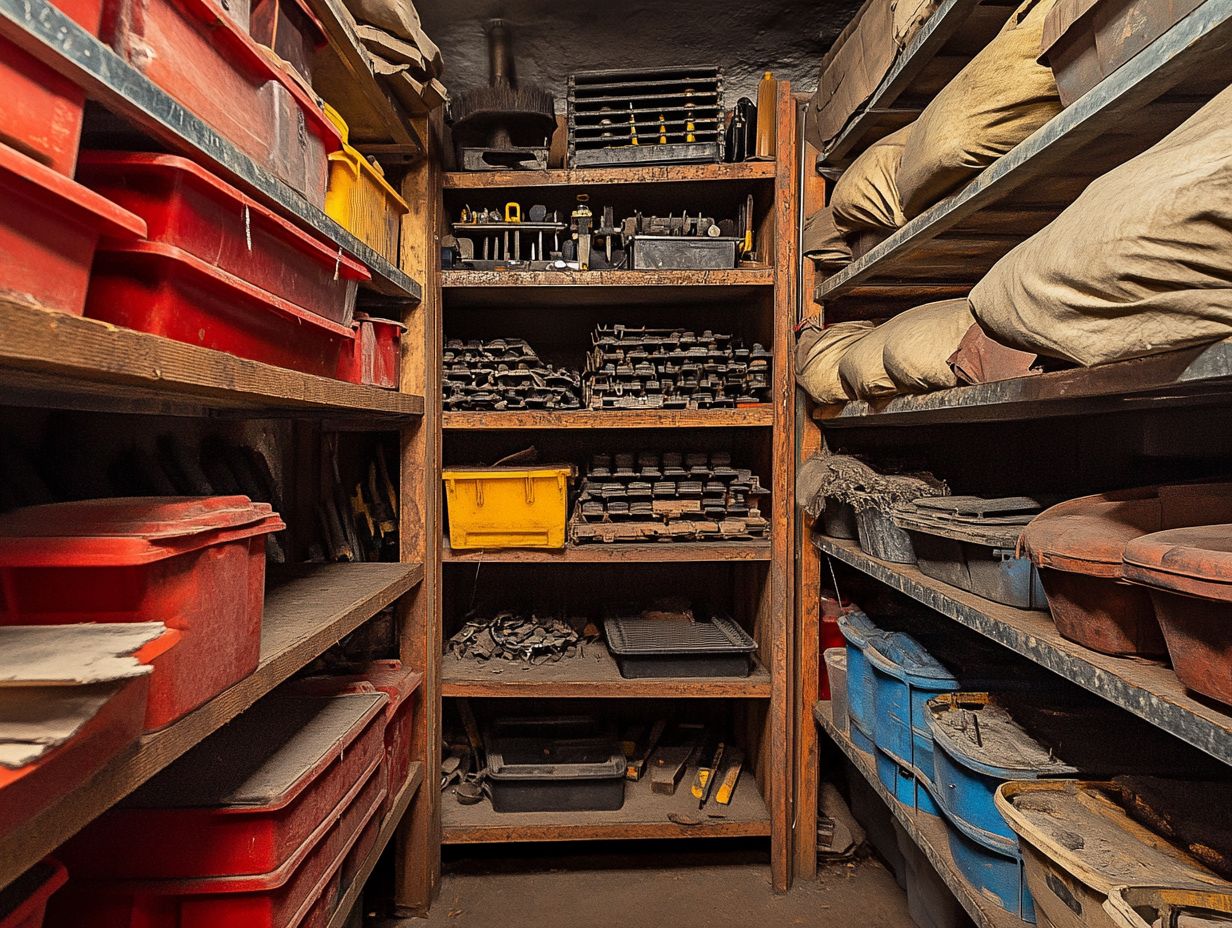
What are the best practices for maintaining metal condition during storage?
The best practices include:
- Proper cleaning, drying, and lubrication before storing.
- Storing in a dry and well-ventilated area.
- Using protective coatings or packaging materials to prevent corrosion.
Why is it important to maintain metal condition during storage?
Maintaining metal condition during storage is crucial because moisture, humidity, and other environmental factors can lead to corrosion, rust, and damage. This reduces the lifespan and quality of the metal.
How often should metal be inspected during storage?
Inspect metal at least once every 3-6 months during storage. If stored in harsh conditions, such as high humidity or extreme temperatures, conduct more frequent inspections.
What are some common causes of metal corrosion during storage?
Common causes of metal corrosion during storage include:
- Exposure to moisture.
- High humidity.
- Salt air.
- Chemical fumes.
Improper cleaning and storage conditions can also contribute to corrosion.
What steps should be taken to prevent metal corrosion during storage?
To prevent metal corrosion, clean and dry the metal thoroughly before storing it. Apply a protective layer or use suitable packaging. Store it in a dry, well-ventilated area. Regular inspections and maintenance are essential.
Can metal condition be restored after storage damage?
Yes, you can often restore metal after it suffers storage damage! It’s all about taking the right steps. Clean off any corrosion, apply a protective layer, and use proper storage techniques to avoid more damage. However, in severe cases, replacing the metal may be necessary.














